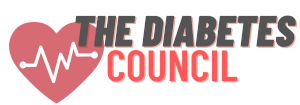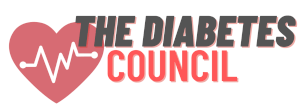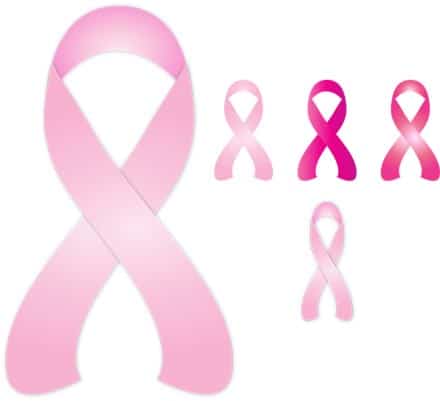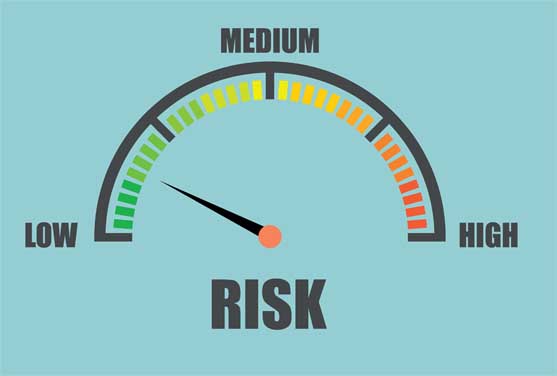
When it comes to health screening process, many people choose to skip over the annual exams for several reasons: 1) convenience, 2) financial burden, 3) thinking they are too young to be at risk of major health issues, and 4) ignorance is a bliss. Yet the healthcare system has repeatedly emphasized “prevention is better than cure” and pushes for the effectiveness of health screening because of these reasons:
- it can save the healthcare sector and the patients a lot of money in stopping a disease in initial stage than chronic stage;
- it can extend the lifespan and quality of life for the American population;
- it can help patients acknowledge their health risks and alter their habits to lower these risks.
However, how realistic are these claims? Here are 45 surprising statistics on the effectiveness of health screening process:
General Stats on Health Screening

- Studies have shown that general health screening programs do not have any significant data that highlights the benefits on the health and healthcare cost for participants in general younger participants. (Health Econ Journal “The Effectiveness of Health Screening”)
- The average annual health care expense are $1,400 more for obese individuals, $2,000 more for smokers, and $6,600 more for diabetes individuals than individuals who do not have these conditions or engage in these habits. (Markkula Center for Applied Ethics)
- Increasing use of preventive services such as tobacco cessation screening, aspirin usage screening, and excessive alcohol consumption screening to 90 percent of the population can save $3.7 billion annually in medical costs. (Surgeongeneral.gov)
- For every prevention incident of HIV infection as a result of screening detection, an estimation of at least $355,000 is saved on providing lifelong treatment to an individual with HIV. (Centers for Disease Control and Prevention)
- Just by lowering 5 percent cases of hypertension in American population can already save $25.3 billion in 5 years. (American Journal of Preventive Medicine “Modeled Health and Economic Impact of Team-Based Care for Hypertension”)
- Economical analysis confirmed that every dollar invested by employers in workplace wellness screening programs can save them $1 to $3 back in medical expenses in employees. (Society for Human Resource Management)
I recommend reading the following articles:
Cardiovascular Diseases
- Deaths related to cardiovascular diseases account for over 17 million deaths annually across America. It has been found that at least $273 billion was spent annually on direct medical cost and $172 billion on indirect costs related to cardiovascular diseases. It has been estimated that 80% cases of cardiovascular complications could be avoided with early detection. (American Heart Association)
- It has been found that 4 to 10% of heart attacks occur in men younger than 45 years of age. About 60% of these individuals suffer from disease in one coronary artery. Early screening can help to diagnose these forms of premature heart disease. (Harvard Medical School)
- 9% of African American women over 20 years of age suffer from cardiovascular diseases. Approximately 30% of Latino women die from cardiovascular disease. This target group can benefit most with screening to identify their risks and alter their lifestyles to minimize their risk of further complications. (American Heart Association)
- Clinical studies have shown that electrocardiography (ECG) have no benefits from testing on individuals with no history of cardiovascular disease and degenerative joint disease. (Joint Bone Spine Journal “Usefulness of Routine Electrocardiography for Heart Disease Screening in Patient with Spondyloarthropathy or Rheumatoid Arthritis”)
- Major cardiovascular diseases was ranked as 5th highest causes of death in young U.S. athletes. In 2017, 1,376 died due to such cause, and 66 of them died from sudden cardiac arrest. Screening in children can greatly reduce the risk by as much as 89%. (American Heart Association)
Diabetes
- Every year, the United States healthcare system spends over $245 on diabetes-related patient care. (National Institute of Diabetes and Digestive and Kidney Diseases)
- 37% of the population are estimated to have prediabetes. Yet American Diabetes Association (ADA) reports that only 1 in 9 American knows that they are prediabetic. (American Diabetes Association)
- The American Diabetes Association stated that an individual could lower their risk of developing diabetes by 58% just by having a 5 to 7% weight loss. (American Diabetes Association)
- Just by decreasing 1% in weight, blood pressure, glucose, and cholesterol risk factors can already lower an individual’s annual average medical cost by $83 to $103. (Surgeongeneral.gov)
- Clinical studies have found that preventive screening and lifestyle changes in type 2 diabetes patients help decrease the average emergency room expenses by an average of 10%. (Reuters)
Cancer
- In 2017, 600,920 Americans died from various forms of cancer. It has been estimated by 3 to 35% of these deaths could be avoided by screening process to diagnose early stages of cancer. (National Cancer Institute)
- In 2017, 252,710 women and 2,470 men in the United States were diagnosed with breast cancer. 41,070 deaths were related to the disease. It was found that mammography screening could reduce the mortality rate by as much as 17%. And in conjunction with early treatment, the mortality rate could be reduce by28%. (Cancer.org)
- In 2017, 161,360 men were diagnosed with prostate cancer. 26,730 deaths were related to the disease. It was found that prostate cancer screening could reduce the death rate by as much as 20%. However, research studies have estimated over-detection problem to increase with age with 27% rate at 55 years to 56% at 75 years and over. (Harvard Medical School)
- Skin cancer is the most prevalent cancer diagnosed in the United States. In 2017, 87,110 new melanoma cases were diagnosed across America. Although it has been found that about 20% of the times when skin areas removed are diagnosed as non-cancerous, skin cancer screening has shown to reduce mortality rate by approximately 7.4%. (Skin Cancer Foundation)
- In 2017, 12,820 new cases of cervical cancer were diagnosed in the United States. The introduction of Pap test greatly cut down the incidence rate from 14.8 per 100,000 individuals in 1975 to 2.3 per 100,000 individuals in 2014. (American Cancer Society)
Newborn Screening
- As a mandate healthcare program in the United States, the newborn screening test has been performed on more than 4 million newborns to identify 60 health and genetic conditions. (Center for Disease Control and Prevention)
- 6,000 newborns are diagnosed each year for serious health conditions in which treatments can significantly improve their future lives. (Center for Disease Control and Prevention)
- 12,500 newborns are diagnosed with various forms of hearing impairment in which treatments can significantly improve their development and lives. (National Center for Hearing Assessment and Management)
- The frequency of finding serious genetic diseases from newborn blood sampling is found to be between 1:500 to 1:1000 births. (Obstet Gynecol Journal “Newborn Screening and the Obstetrician”)
- After the addition of congenital heart disease screening to the newborn screening program in 2011, there was a 33% decline in infant deaths resulting from CCHD and 21% decline in infant deaths related to cardiovascular complications. (Centers for Disease Control and Prevention)
Pregnant Women
- Birth defects happen in 3% of babies born each year in the United States. (Live Science)
- Each year, approximately 1 in every 700 babies are born with Down syndrome. About 67% of women chose to abort the pregnancy after receiving a positive test for Down syndrome. (Center for Disease Control and Prevention)
- With the introduction of syphilis screening program in pregnant women, the number of babies born with syphilis has decreased from 4410 cases in 1991 to 353 cases in 2004. (US Preventive Service Task Force)
- About 30% of women do not know of their HIV-positive status before their pregnancies. Before the introduction of HIV pregnancy screening test, more than 2,000 babies were born with HIV. After the introduction of the program in 2010, less than 200 were born with HIV. In 2015, only 86 babies were born with HIV in the United States. (Medscape)
- Every year, 2 – 10% of pregnant women in the United States are affected by gestational diabetes. Those who develop this condition are 7 times more likely to develop type 2 diabetes 5-10 years after delivery. Early lifestyle change can help reduce the diabetes risk by 50%. (World Journal of Diabetes “Changing Trends in Management of Gestational Diabetes Mellitus”)
Risks and Overdiagnosis
- It has been estimated at about 12 million patients (5% of the population) in the United States are misdiagnosed in health screening process each year. (CBS)
- It has been found that 31% of American women were overdiagnosed with breast cancer. That means 15 in every 1,000 female patients were overdiagnosed in the screening process. (Breast Cancer Res Journal “Benefits and Harms of Mammography Screening”)
- A survey in 2008 indicated that 30% of children population was overdiagnosed with asthma by children health screenings across America. (Chest Journal “Risk of Misdiagnosis, Health-Related Quality of Life, and BMI in Patients Who Are Overweight with Doctor-Diagnosed Asthma”)
- ⅔ of prostate cancer cases and ⅓ of breast cancer cases are overdiagnosed annually. (Washington Post)
- 6% of male patients contracted infections from the prostate biopsies procedure annually. (Journal of Urology)
- 70% of female patients reported feeling stressed during the biopsy procedure. (Washington Post)
- Invasive prenatal health screening procedure has a 1% risk of causing miscarriage (that means about 1 in 100 procedures). (HealthWA)
Further reading:
Health Screening Money Waste
- It has been found that approximately 40% of Medicare expenditure is spent on preventive health screenings that are regarded as not necessary. (The Center for Public Integrity)
- $19 billion is spent on cancer screenings for individuals who are older than the recommended age. (The Center for Public Integrity)
- $31 million are spent on health screening for seniors of age 90 or over annually. (New York Times)
- $4 million are spent on screening men over 90 years of age for prostate cancer. (MD Health)
- 22 million mammogram are performed on women over the age of 75 annually (the recommended cut-off age according to the government. (CNN)
- Over 13 million Medicare claims for cervical cancer screenings were for women who are over the age of 65 (the recommended cut-off age according to the government). (The Center for Public Integrity)
- It was found that 15% of terminally ill males received prostate cancer screenings. (The Center for Public Integrity)
- It was found that 9% of terminally ill females received mammograms and 6% received Pap smears. (CNN)
- $323 million was spent by Medicare between 2003 and 2008 on colon cancer screenings for seniors over the age of 75. $34 million was spent on individual over age 85. (Washington Post)
- $1 billion was spent between 2003 and 2008 by Medicare to screen women seniors for breast cancer. $21 million was spent on testing women over the age of 90. (JAMA Internal Medicine Journal)
Although it may seem that a lot of money is used on cancer screening for older age group individuals, we should consider the fact that the American older generation is much healthier and active in our current society than a decade ago. As the government and many people want to push the retirement age to 70, why shouldn’t health screening process be offered as well? In addition to all other statistics pointing to the benefits and effectiveness of health screening process, it is obvious to conclude that the preventive programs can greatly minimize healthcare cost while helping the society enjoy more a vibrant future.








